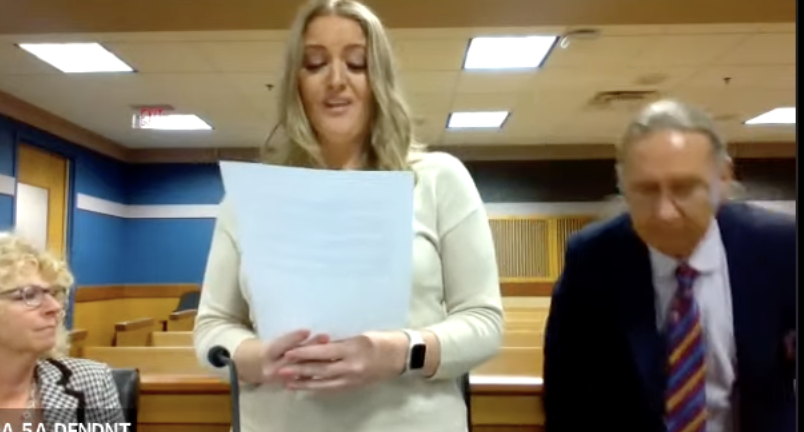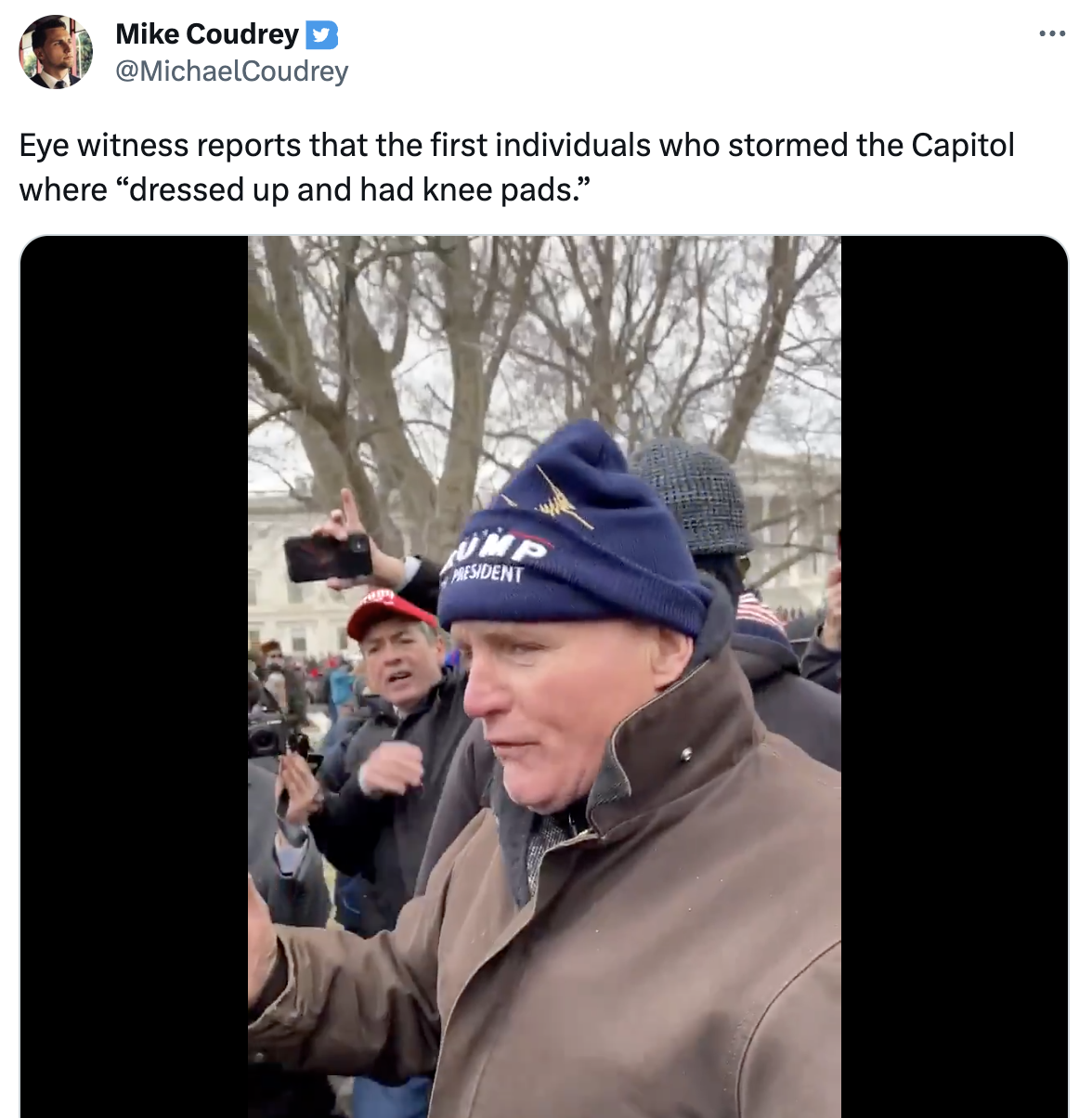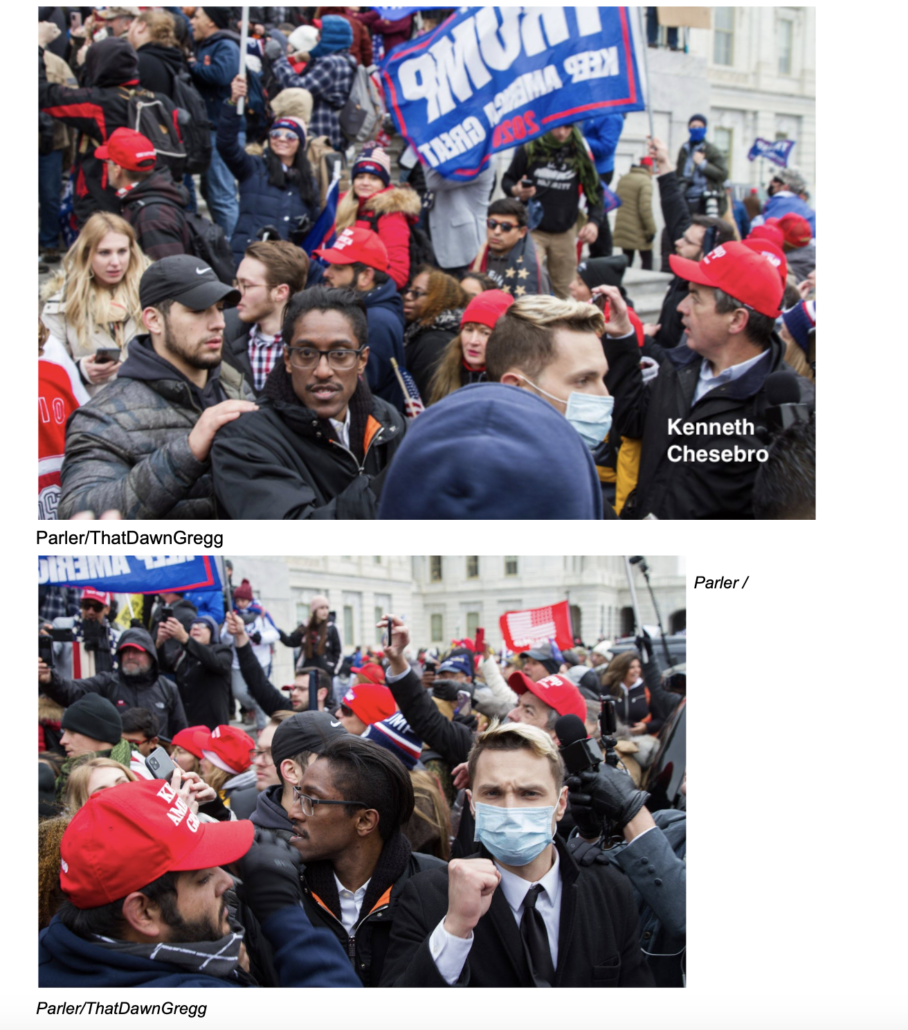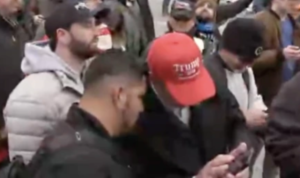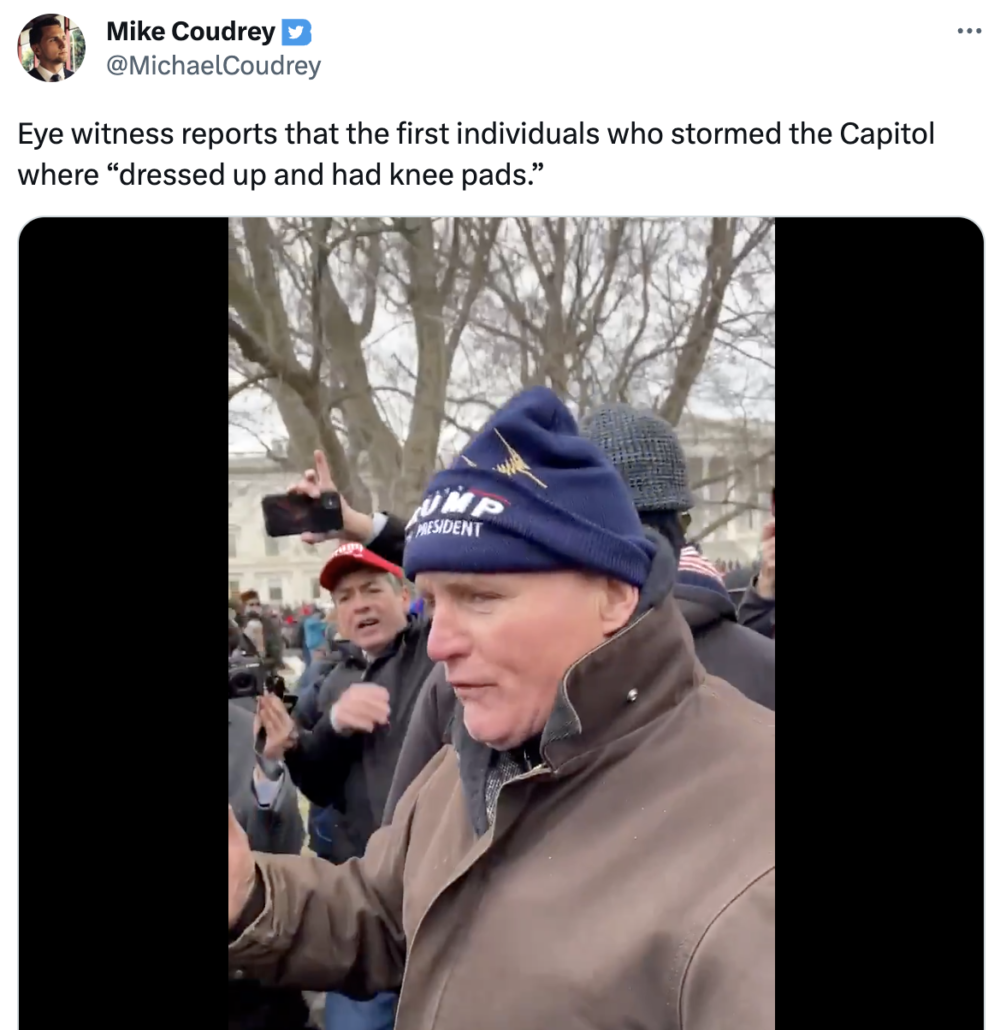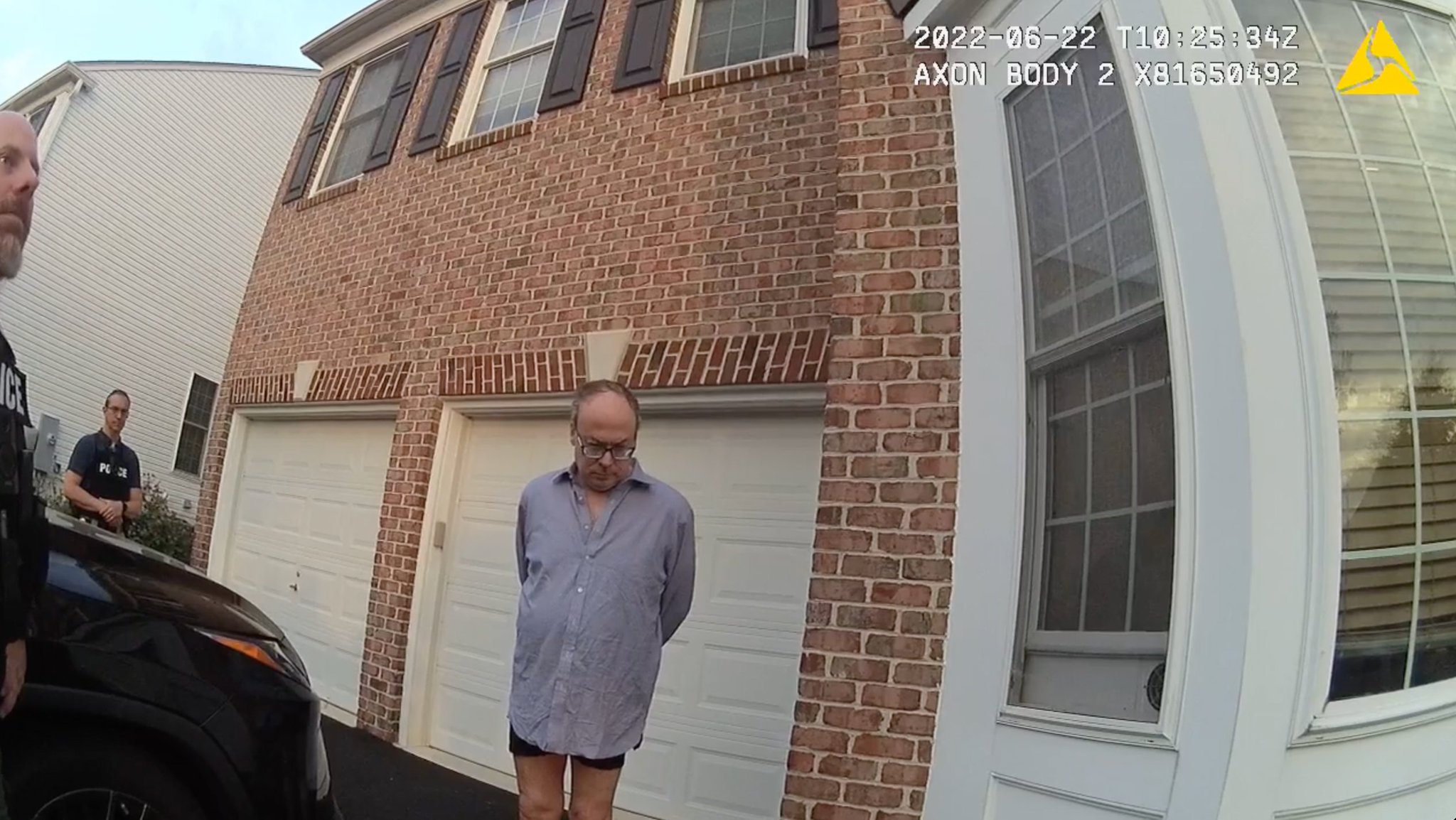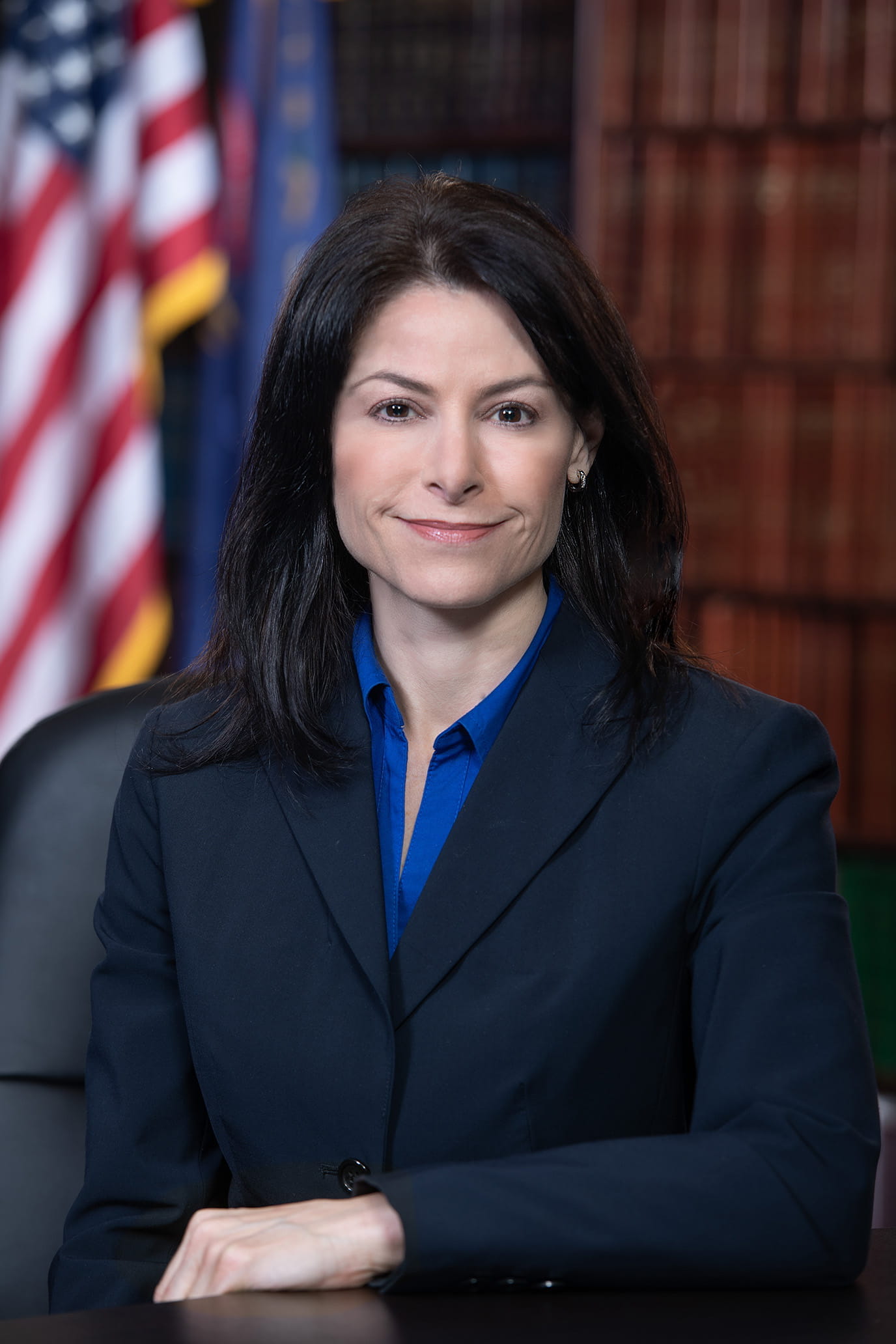The first overt act in the investigation into Donald Trump’s six co-conspirators happened on January 25, 2021.
The Jeffrey Clark investigation started at DOJ IG
On that day, DOJ Inspector General Michael Horowitz announced that he was opening an investigation, “into whether any former or current DOJ official engaged in an improper attempt to have DOJ seek to alter the outcome of the 2020 Presidential Election.” The announcement came three days after Katie Benner did a story laying out Jeffrey Clark’s efforts to undermine the election results. Horowitz explained that he made the announcement, “to reassure the public that an appropriate agency is investigating the allegations.”
We don’t know all the details about what happened between Horowitz’s announcement of that investigation and last week’s indictment describing Clark as co-conspirator 4. Probably, when Merrick Garland arranged for Joe Biden to waive Executive Privilege so Jeffrey Rosen and others could tell the Senate Judiciary Committee what happened in July 2021, that freed up some communications to DOJ IG. For the record, I raised questions about why it took so long — though I suspect the delay in restoring the contacts policy at DOJ was part of it. Some time before May 26, 2022, DOJ obtained warrants for a private Jeffrey Clark email account and on May 26, Beryl Howell approved a filter process. On June 23, 2022, the FBI seized Clark’s phone — with some involvement of DOJ IG — and the next day DOJ seized a second email account of Clark’s. When FBI seized Clark’s phone, I predicted it would take at least six months to fully exploit Clark’s phone, because that’s what it was generally taking, even without a complex privilege review. Indeed, five months after first seizing some of Clark’s cloud content, on September 27, 2022, he was continuing to make frivolous privilege claims to keep his own account of the events leading up to January 6 out of the hands of investigators.
The first overt act in the investigation into one of Trump’s co-conspirators happened 926 days ago. Yet TV lawyers continue to insist the investigation that has resulted in an indictment including Clark as Donald Trump’s co-conspirator didn’t start in earnest until Jack Smith was appointed in November 2022.
A privilege review of Rudy’s devices was set in motion (in the Ukraine investigation) in April 2021
Clark is not the only one of Trump’s co-conspirators against whom investigative steps occurred in 2021, when TV lawyers were wailing that nothing was going on.
Take the December 6, 2020 Kenneth Chesebro memo that forms part of the progression mapped in the indictment from Chesebro’s efforts to preserve Wisconsin votes to trying to steal them. NYT liberated a copy and wrote it up here. It’s not clear where DOJ first obtained a copy, but one place it was available, which DOJ took steps to obtain starting on April 21, 2021 and which other parts of DOJ would have obtained by January 19, 2022, was on one of the devices seized from Rudy Giuliani in the Ukraine influence-peddling investigation. The PDF of a December 6 Kenneth Chesebro memo shows up in Rudy’s privilege log in the Ruby Freeman suit, marked with a Bates stamp from the Special Master review initiated by SDNY.
While Rudy is claiming privilege over it in Freeman’s lawsuit, it is highly likely Barbara Jones ruled that it was not (only 43 documents, total, were deemed privileged in that review, and there are easily that many emails pertaining to Rudy’s own defense in his privilege log).
The way in which SDNY did that privilege review, in which SDNY asked and Judge Paul Oetken granted in September 2021 that the review would cover all content post-dating January 1, 2018, was public in real time. I noted in December 2021, that Rudy’s coup-related content would be accessible, having undergone a privilege review, at any such time as DC investigators obtained probable cause for a warrant to access it.
Since then, Rudy has claimed — to the extent that claims by Rudy are worth much — that all his coup-related content would be available, and would only be available, via materials seized in that review. (In reality, much of this should also have been available on Gmail and iCloud, and Rudy’s Protonmail account does not appear to have been captured in the review at all.)
But unless you believe that Rudy got designated co-conspirator 1 in the indictment without DOJ ever showing probable cause against him, unless you believe DOJ decided to forego directly relevant material that was already privilege-reviewed and in DOJ custody, then we can be certain January 6 investigators did obtain that content, and once they did, the decisions made in April and August and September 2021 would have shaved nine months of time off the investigation into him going forward.
Indeed, those materials are one likely explanation for why DOJ’s investigation, as represented by subpoenas sent starting in May 2022, had a slightly different focus than January 6 Committee did. The first fake elector warrants sent in May 2022 as well as those sent in June and November all included Victoria Toensing and Joe DiGenova. Rudy’s known J6C interview included the couple as key members of his post-election team. But no one else seems to have cared or figured out what they did. After Rudy listed them in his January 6 interview, the Committee never once raised them again. But they were always part of a sustained focus by DOJ.
The more explicit investigative steps targeting Rudy have come more recently. Rudy was subpoenaed for information about how he was paid in November 2022. He sat for an interview in June.
But a privilege review on the coup-related content on seven of Rudy’s devices would have been complete by January 19, 2022 — the day before the long privilege battle between J6C and John Eastman started.
DOJ’s investigation of Sidney Powell’s graft was overt by September 2021
The investigation into one more of the six co-conspirators described in Trump’s indictment was also overt already in 2021: Sidney Powell.
Subpoenas sent out in September — along with allegations that Powell’s associates had made damning recordings of her — were first reported in November 2021. The investigation may have started under the same theory as Jack Smith’s recent focus on Trump: That Powell raised money for one thing but spent the money on something else, her legal defense. Molly Gaston, one of the two prosecutors who has shown an appearance on Trump’s indictment and who dropped off her last crime scene cases in March 2021, played a key role in the investigation.
By the time of DOJ’s overt September steps, both Florida’s Nikki Fried and Dominion had raised concerns about the legality of Powell’s graft.
According to Byrne, Powell had received a wave of donations in the aftermath of the election after being praised by mega-popular right-wing radio host Rush Limbaugh. But the donations were often given haphazardly, sometimes as a dollar bill or quarter taped to a postcard addressed to Powell’s law office. Byrne claims he discovered that Powell had amassed a fortune in contributions, somewhere between $20 and $30 million but provided no evidence to support the claim. A projected budget for Defending the Republic filed with the state of Florida lists only $7 million in revenue for the group.
Defending the Republic’s funds weren’t going towards the pro-Trump goals donors likely envisioned, according to Byrne. Instead, he claimed they were spent on paying legal bills for Powell, who has faced court disciplinary issues and a daunting billion-dollar defamation lawsuit from Dominion Voting Systems.
“It shouldn’t be called ‘Defending the Republic,’” Byrne said in the recording. “It should be called ‘Defending the Sidney Powell.’”
Attorneys for Dominion have also raised questions about the finances for Defending the Republic, which the voting technology company has sued alongside Powell. In court documents filed in May, Dominion accused Powell of “raiding [Defending the Republic’s funds] to pay for her personal legal defense.”
Dominion attorneys claimed in the filing that Powell began soliciting donations to Defending the Republic before officially incorporating the group. That sequence, they argued, meant that donations for the group “could not have been maintained separately in a bank account” and “would have necessarily been commingled in bank accounts controlled by [Powell].”
[snip]
Defending the Republic’s finances first attracted the scrutiny of regulators in Florida shortly after Powell founded the group in November 2020 when authorities received a complaint and subsequently issued a subpoena to internet hosting service GoDaddy for information about the group’s website.
In a June press conference, Florida Agriculture Commissioner Nikki Fried said Defending the Republic was “found to be soliciting contributions from the State of Florida or from persons within the State of Florida” on the internet “without having filed in the State of Florida” as a charitable organization.”
On Aug. 24, Defending the Republic paid a $10,000 fine as part of a settlement agreement with Florida authorities over its fundraising.
All that graft would directly overlap with the sole focus on Powell in the indictment: on her false claims about voting fraud, particularly relating to Dominion. Aside from a claim that Powell was providing rolling production of documents in January 2022, it’s not clear what further steps this investigation took. Though it’s not clear whether Powell showed up on any subpoenas before one sent days after Jack Smith’s appointment in November.
Unlike Clark and Eastman, there have been no public reports that Powell had her phone seized.
DOJ may have piggybacked off John Eastman’s legislative purpose subpoena
DOJ’s overt focus on John Eastman came after the January 6 Committee’s long privilege battle over his Chapman University emails. Two months after Judge David Carter found some of Eastman’s email to be crime-fraud excepted (at a lower standard for “corruptly” under 18 USC 1512(c)(2) than was being used in DC District cases already), DOJ obtained its own warrant for Eastman’s emails, and a month later, his phone.
While it seems like DOJ piggybacked off what J6C was doing, the phone warrant, like Clark’s issued on the same day, also had involvement from DOJ IG.
Whatever the import of J6C, it’s notable that J6C was able to get those emails for a legislative purpose, without first establishing probable cause a crime had occurred. DOJ surely could have subpoenaed Eastman themselves (though not without tipping him off), but it’s not clear they could have obtained the email in the same way, particularly not if they had to show “otherwise illegal” actions to do so, which was the standard Beryl Howell adopted in her first 1512(c)(2) opinion, issued orally on January 21, 2022.
DOJ’s focus on Kenneth Chesebro (whom J6C didn’t subpoena until July 2022, months after DOJ was including him on subpoenas; see correction below) and whoever co-conspirator 6 is likely were derivative of either Rudy and/or Eastman; J6C subpoenaed Rudy, Powell, and Epshteyn on January 18 — though Epshteyn did not comply — and Mike Roman on March 28. Epshteyn shows up far more often in Rudy’s privilege log than Roman does.
But of the four main co-conspirators in Trump’s indictment, DOJ opportunistically found means to take investigative steps — the DOJ IG investigation, probable cause warrants in another investigation, and a fundraising investigation — to start investigating at least three of the people who last week were described as Trump’s co-conspirators. Importantly, with Clark and Rudy, such an approach likely helped break through privilege claims that would otherwise require first showing the heightened probable cause required before obtaining warrants on an attorney.
We know a fair amount about where and when the investigation into four of Trump’s six co-conspirators came from. And for three of those, DOJ took investigative steps in 2021, before the January 6 Committee sent out their very first subpoena. Yet because those investigative steps didn’t happen where most TV commentators were looking — notably, via leaks from defense attorneys — those steps passed largely unnoticed and unobstructed.
Update, August 20: The J6C sent a subpoena to Chesebro in March, before the July one that was discussed at his deposition.

